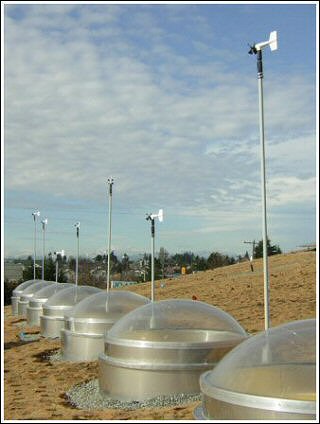Sound and Vision
Andrew Schloss & Dale Stammen
Public Art Installations as a “Reality to Sensory” Process
Laurel Point Inn
11 am, Friday January 27th
Andrew Schloss is a pioneer in new musical instruments. He has performed in concert halls and major festivals around the world, and has received numerous awards and fellowships: Fulbright Scholar in France at IRCAM, collaborative composer's grant from the National Endowment for the Arts, commission from the British Columbia Arts Council, in addition to major creative and research grants from the Langlois foundation, NSERC and SSHRC. He was invited to perform at the Centennial celebrations at Stanford University along with Leon Theremin, inventor of one of the first electronic musical instruments of the 20th century. In the 1970’s he toured Europe and North America with acclaimed British director Peter Brook.
Schloss studied at Bennington College, the University of Washington, and Stanford University, where he received his Ph.D. in 1985 working at CCRMA (Center for Computer Research in Music and Acoustics). He was co-organizer of the International Computer Music Conference (ICMC) in Havana, Cuba in 2001, and was music chair for the NIME conference (New Interfaces for Musical Expression) in 2005. Schloss has taught at Brown University, the University of California at San Diego, The Banff Centre for the Arts, and currently at the University of Victoria.
Dale Stammen received his doctoral degree in Music, Media and Technology from McGill University in Montreal, Canada. He also studied music composition, computer music and saxophone performance at Northwestern University in Evanston, Illinois. Dale has participated in numerous artist residencies at the Banff Centre for the Arts. As a member of the Quarks! Trio, he has performed in hundreds of concerts across Western Canada and the United States. A winner of numerous competitions, Dale has also performed concertos with the Calgary and Ottawa symphony orchestras. From 1996-2000, he was a lead software developer of the RealPlayer and RealProducer applications from RealNetworks. He has written the software used in many installations around the world, most recently for the new Ballard Public Library and the new Seattle City Hall. Dale lives in Seattle where he works as a musician and a technical consultant for a wide variety of artistic projects.


ACKNOWLEDGMENTS
Our thanks to the Seattle Arts Commission and the Seattle Public Libraries for the opportunity to make this installation, to Coastal Environmental Systems for the anemometers and general support, and to Randall Jones for his expert programming of the LED displays.
|
Public Art Installations as a “Reality to Sensory” Process
We have created two permanent public art installations, opened in May 2005, called FLOW and Weather Permitting for the new Ballard Neighborhood Services Center (NSC), and the adjoining Seattle Public Library, Ballard branch. These two installations share the same sensors (anemometers, hydrophone and pyranometer, described below) that are mounted on the roof of the library. The installations are entirely driven by the weather and the passing of time. Nature supplies an infinite flow of information: reality, in the form of wind, rain, sunlight and time. We map these data in real time into auditory and visual sensations that are experienced by the public inside and outside the buildings. What in scientific inquiry is called “data acquisition” is in our context, a way of translating from reality outside to a sensory experience inside.
The visual aspect is an ensemble of custom-made LED displays (designed by Don Fels) that hang from the ceiling. There are seven of these displays in the library and one in the NSC. These are controlled via a programming language called Max/MSP/jitter. The sound aspect is a six-channel audio diffusion in the NSC. The sound sources are three-fold: A large collection of sound files that were recorded in the Ballard neighborhood, real time audio generated from the anemometers (wind sensors) and live audio from the hydrophone (underwater microphone) on the roof. Data from the anemometers, hydrophone and pyranometer (solar sensor) drive the process of rendering both the LED displays and the sound generation. Both the sound and the visuals have custom MSP and jitter objects of our design.
The sound files, all recorded in Ballard (a neighborhood of Seattle) in the years 2004/2005 are moving through a six-channel sound space. The flow and direction of sounds through the six channels is related to the flow of air, the wind outside the building, which is measured by nine wind sensors permanently mounted on the roof. When it is raining, the hydrophone amplifies the sound of dripping water on the roof, which becomes part of the indoor soundscape, registering sound underwater as a whale or dolphin would. It is as if a whale has been posted on the roof of the library and passes her sensations into the interior space. The two live sound sources just described are automatically blended together with the recorded environmental sounds. The result is an infinitely varying soundscape.
|
|
|
|

